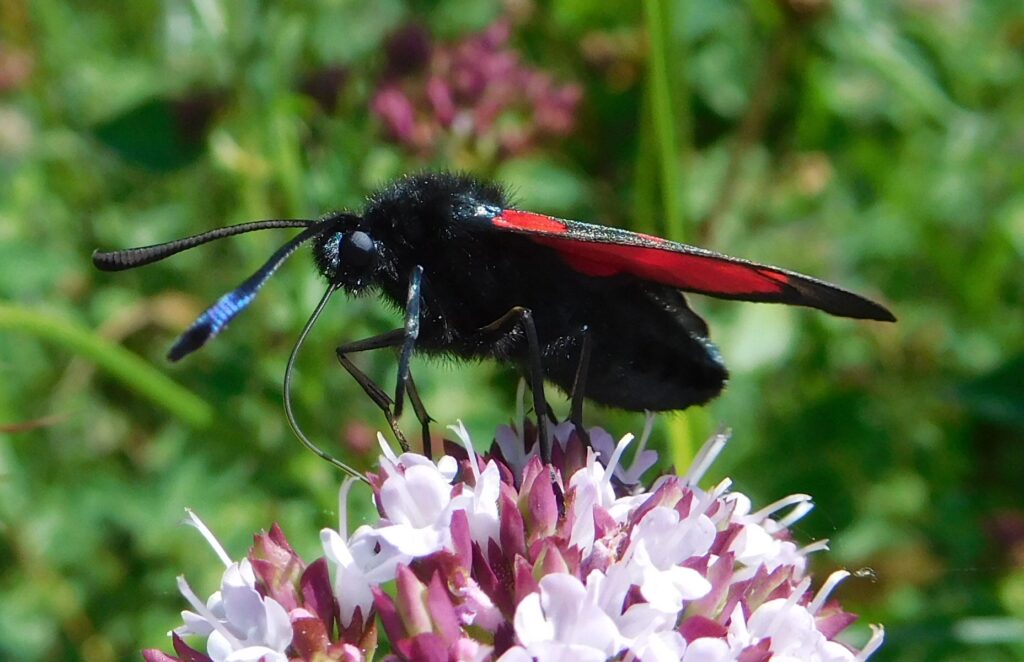
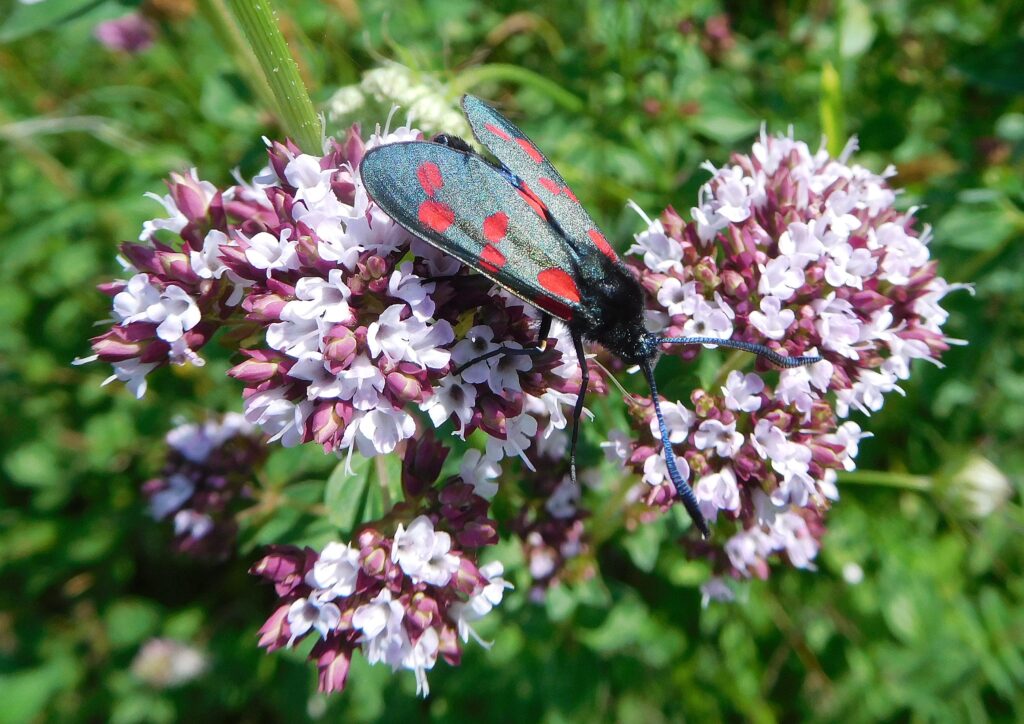
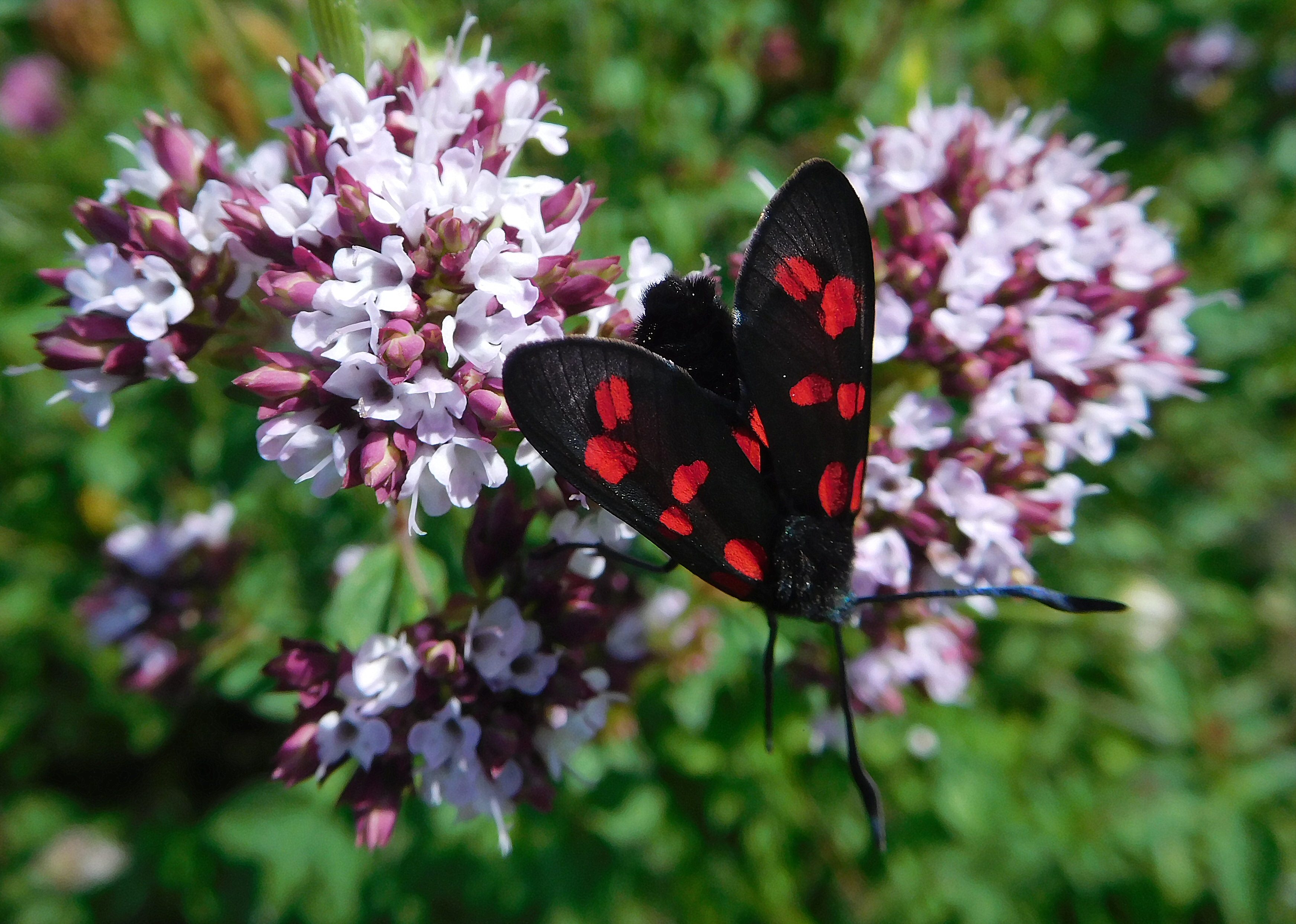
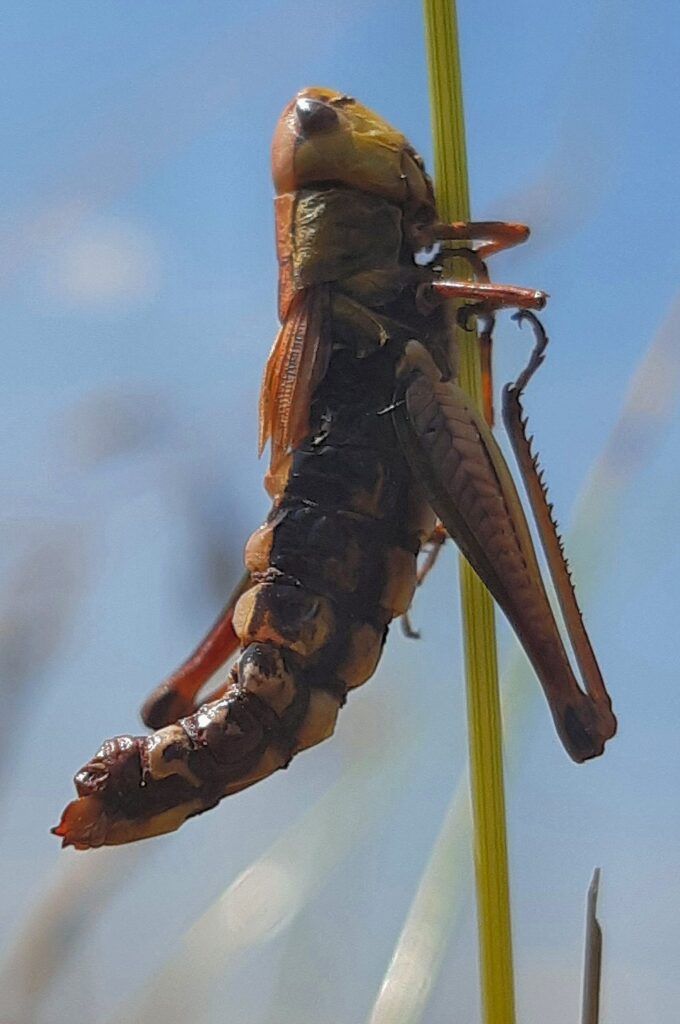
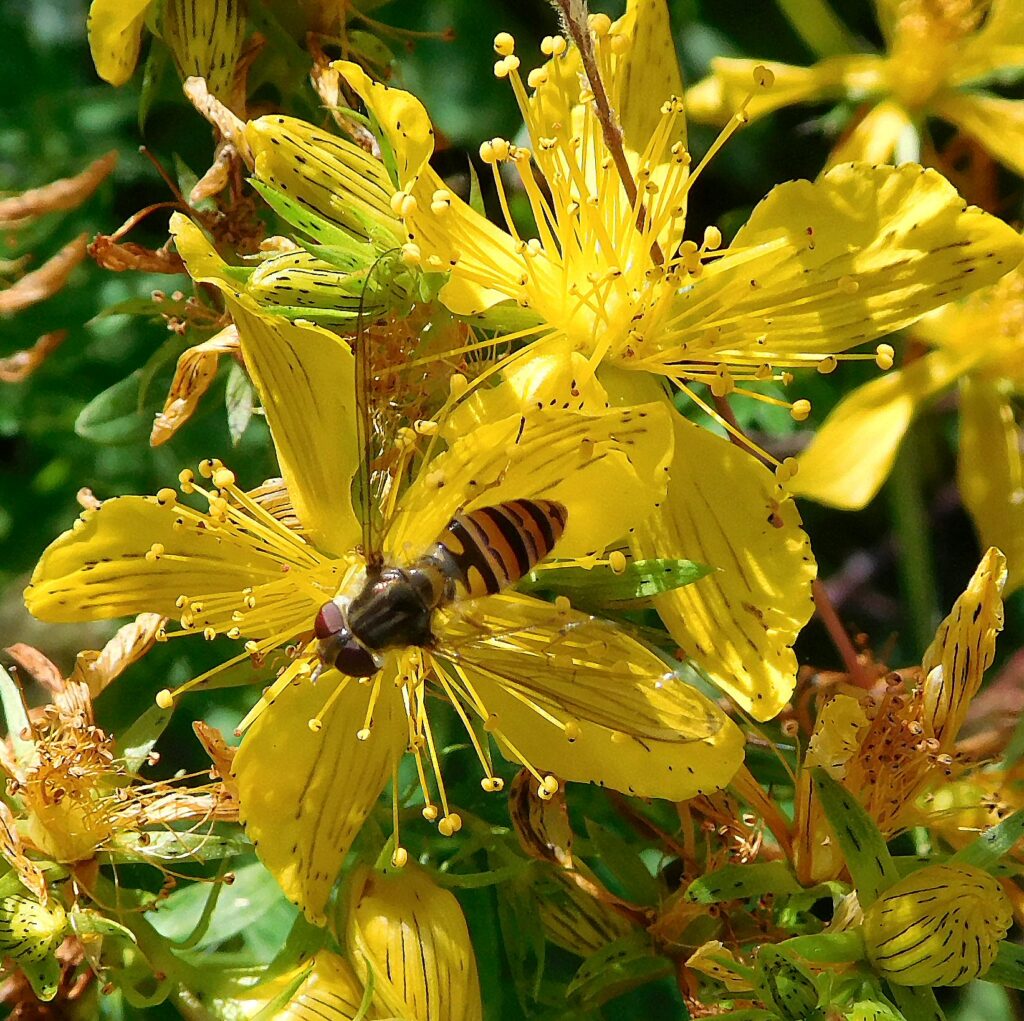
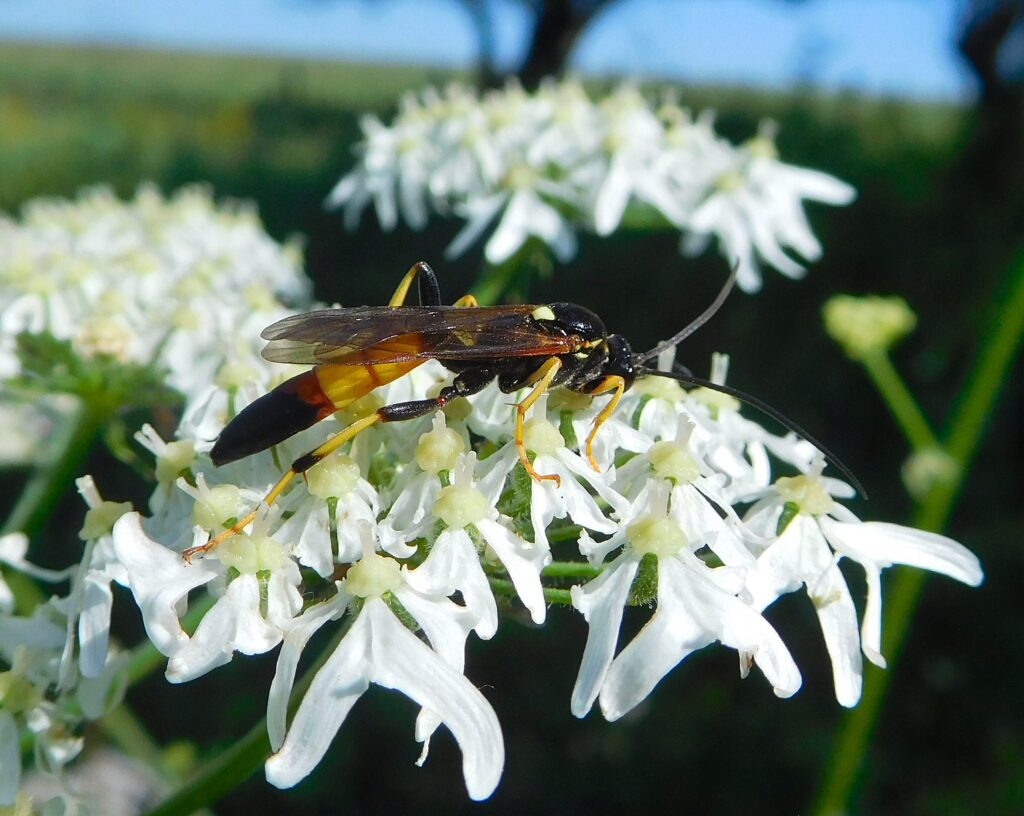
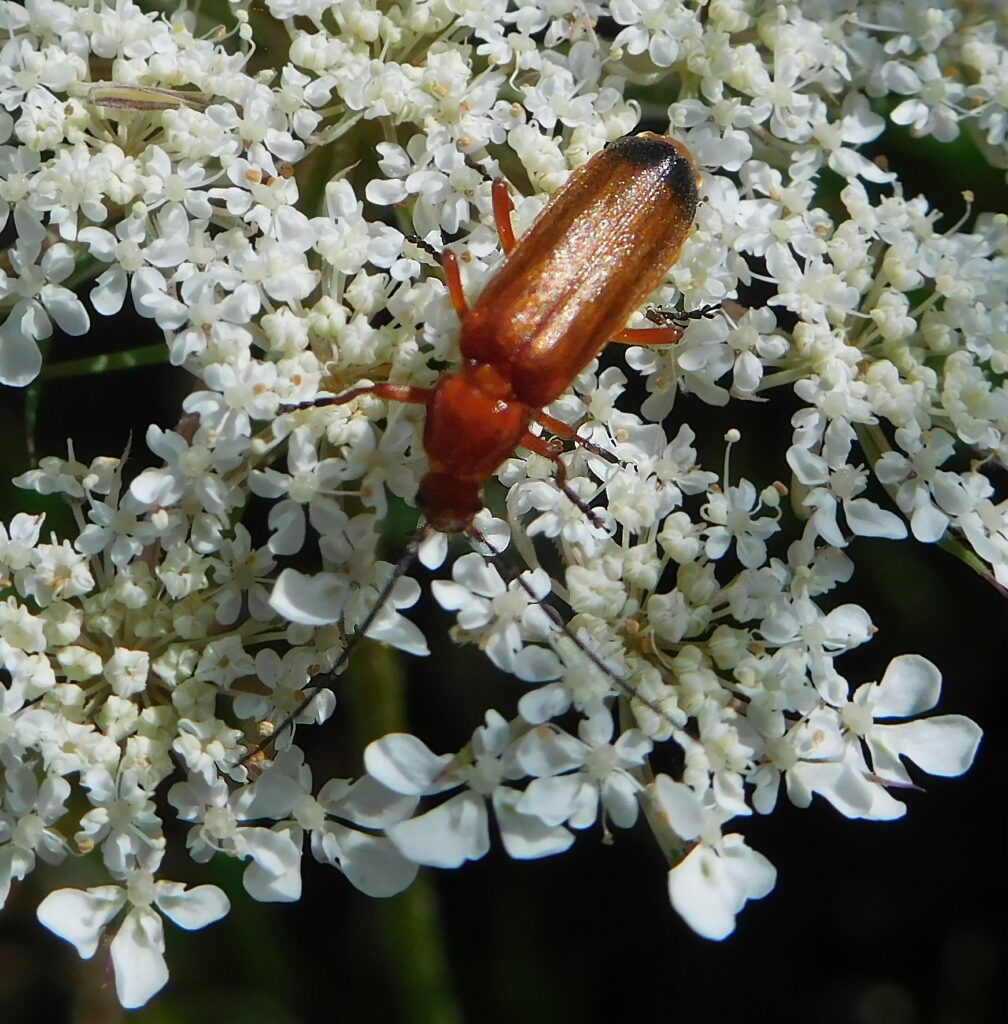
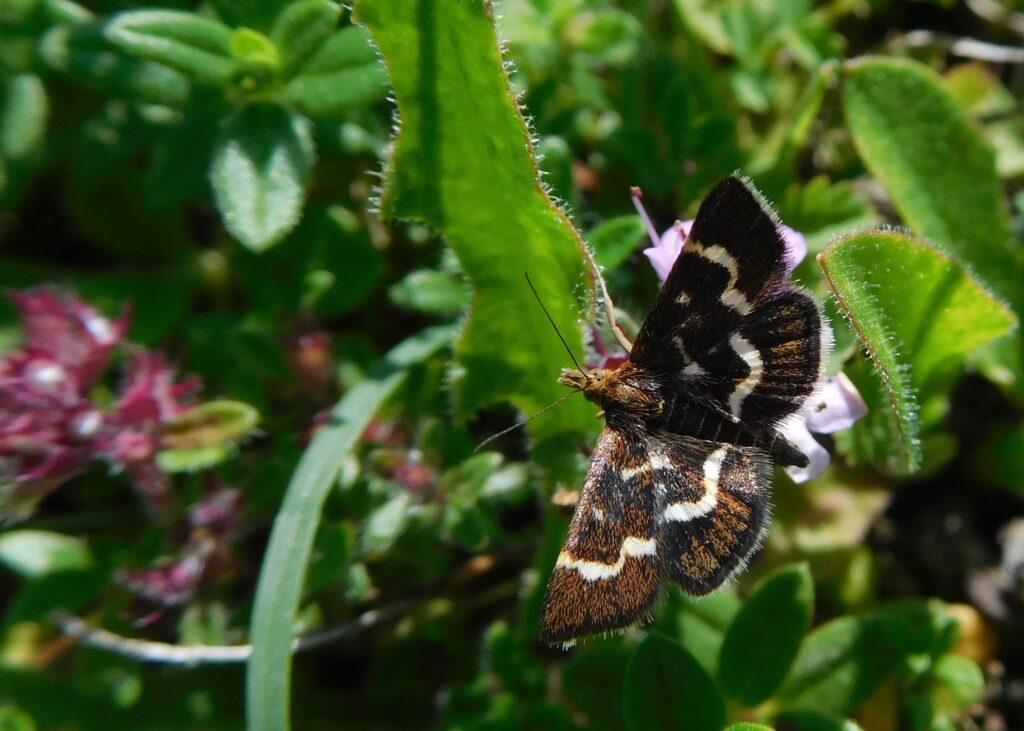
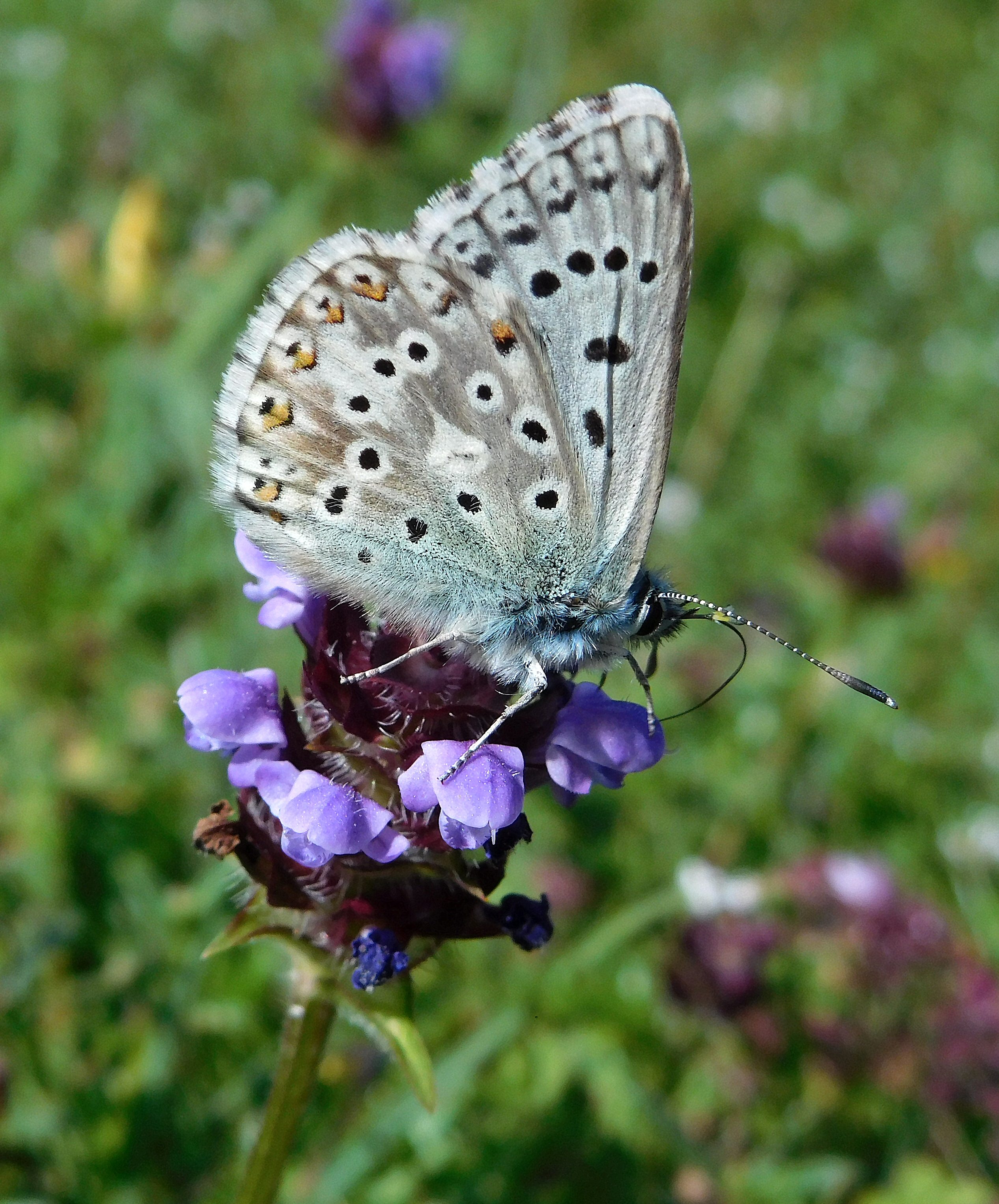
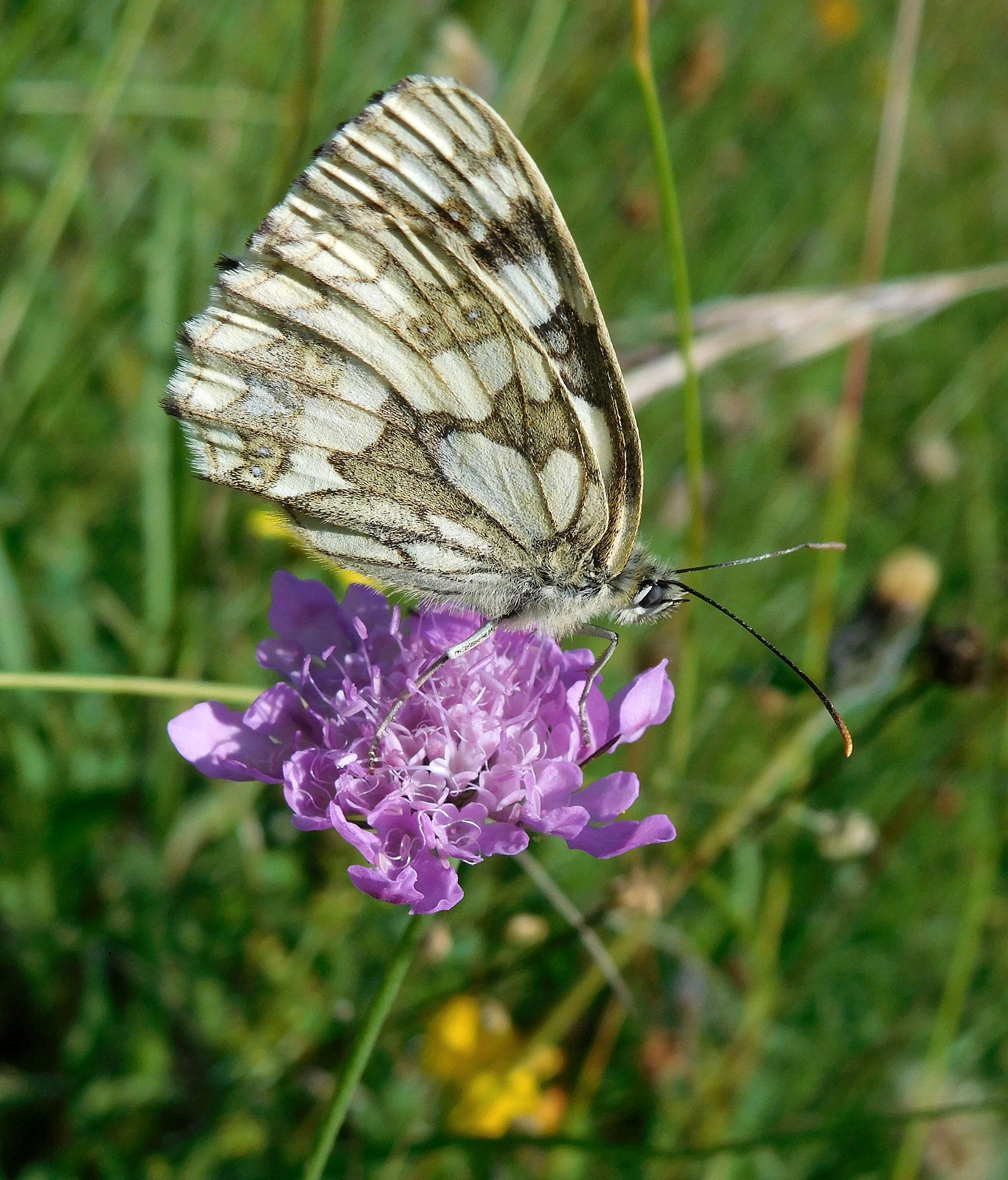
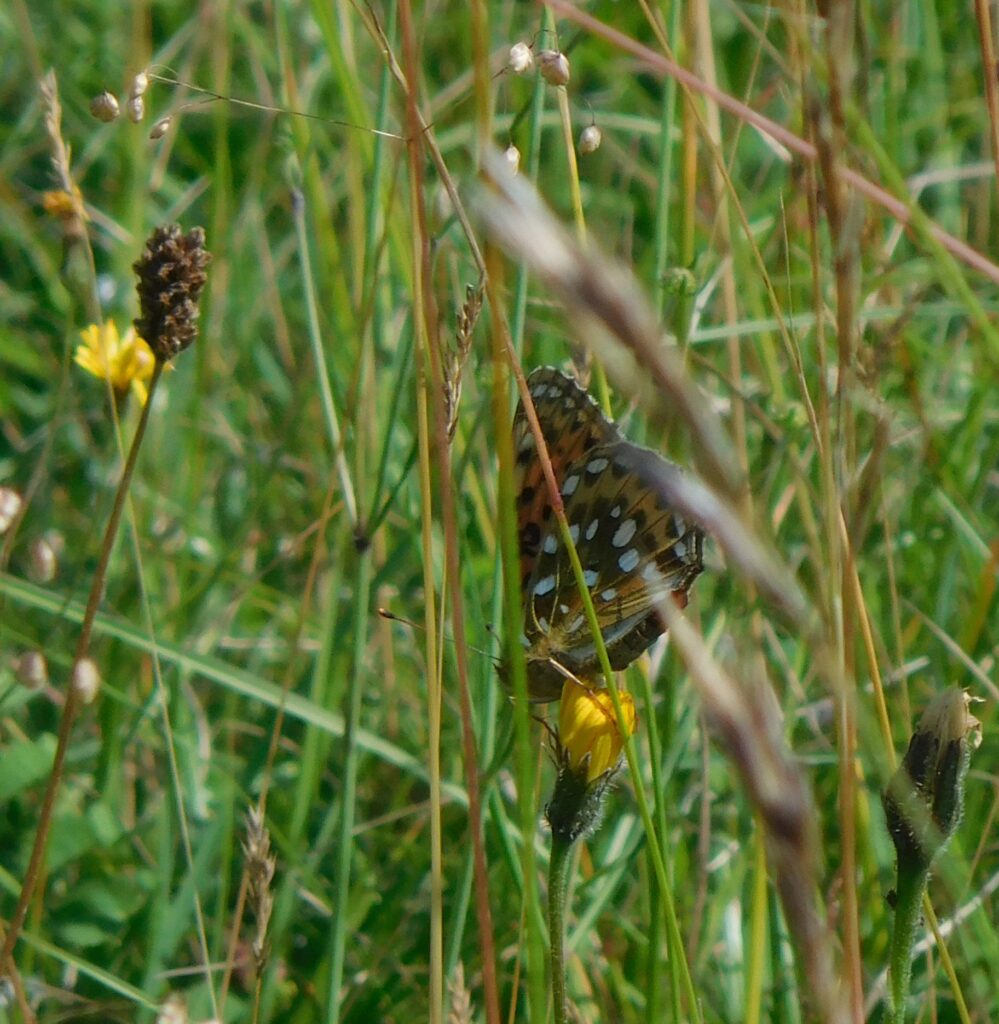
There were also Small Whites, Meadow Browns, Gatekeepers, Small Skippers, and possibly Chalkhill Blues about.

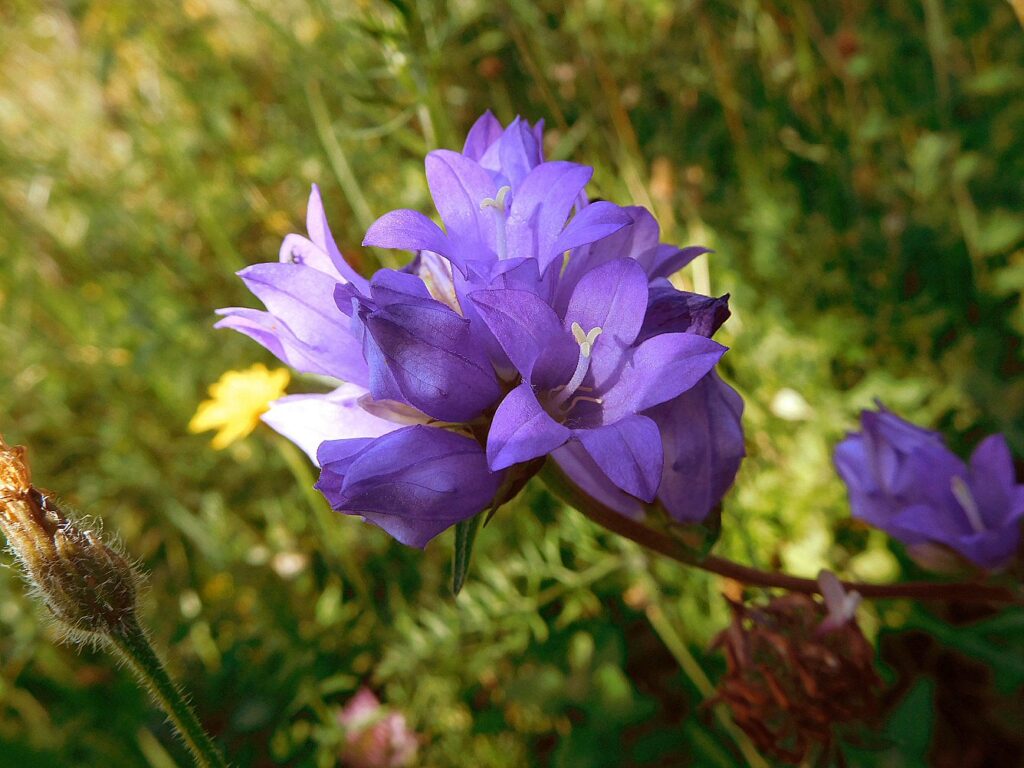











There were also Small Whites, Meadow Browns, Gatekeepers, Small Skippers, and possibly Chalkhill Blues about.



Well, what a piece of luck. I was just inspecting the ragwort where the Cinnabar caterpillars were clustered (by the rail of the Anthill Meadow), and had seen they had grown, and had dispersed from one stalk to three or four — when I saw an Ichneumon approach with the usual dancing flight. Grabbing the camera, I took three photographs, of which the above is the last, and I think the prettiest.
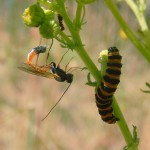
This is the second photo: the wasp has her abdomen curled beneath her body, towards her prey (ok, host, she’s a parasitoid).
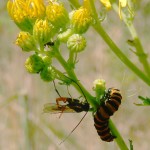
And this is actually the first photo, the wasp very close to the caterpillar, her ovipositor sharply folded under her thorax: the caterpillar has just twitched sharply, presumably on being ‘stung’ with an egg now fatally implanted in its body. The cinnabar is aposematic, full of bitter and poisonous chemicals, which don’t protect it against this sort of attack, evidently.
Down by the pond there were plenty of Azure damselflies, one Common Bluetail, and some really tiny newly-metamorphosed froglings hopping about in the mud. A Small Skipper perched obligingly on a Yellow Iris leaf, not far from a plump Iris Sawfly larva.

Down at the Picnic Meadow, ignoring a picnic and dropped bicycle in the entirely dry brown grass, an Essex Skipper visited some Bramble flowers. It’s just like the Small Skipper, but without the orange on the antennae. A Meadow Brown sat in the grass.
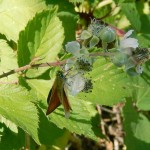
In the woods, a Holly Blue flew high, near a Holly tree. A Small White completed the butterfly tally for the walk.
Most of my last few visits to Gunnersbury Triangle have been taken up with untangling a mass of fallen Willow trees in the mangrove swamp. One tree fell on the next, which fell on the next … and the whole lot were in sticky mud with a rising autumn water table, covered in ivy to boot. I lopped, chopped and carried branches and lumps of ivy away, getting happily hot, tired and dirty in the process.
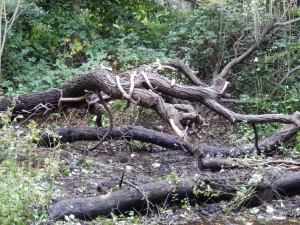
Yesterday I wandered around with no tools other than camera and binoculars, and was rewarded with the sight of a Grey Wagtail, a Robin and a Wren hopping about and feeding in their different styles, exactly where I had been clearing.
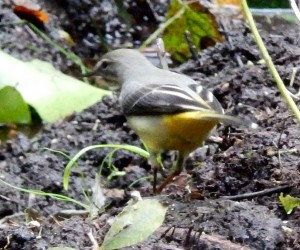
The wagtail was gobbling mouthfuls of grubs that it grabbed from the soft mud. It constantly bobbed and wagged its tail, displaying its yellow rump in the process. Could that be aposematic – is the yellow, in other words, a warning that the bird is distasteful? If not, why does it constantly flash yellow, even when no other birds of its species are about?
Today, I finished lopping the fallen Willow branches; as these last ones were over on the side, it was a cleaner and drier job. Then I joined in with a corporate group from Lend Lease, a well led and relaxed team … of property developers. They were incredibly pleasant to be with. The next surprise was at the hut when we all had a cup of tea: a nice Indian businessman in a suit came and asked us if his firm of engineers could use the reserve … for a group meditation. They stood about quietly and respectfully in a group, at least one person with hands pressed together in the ‘namaste’ position. We went on clearing and coppicing in the delightful autumn weather.
I got a small winged bug in my mouth; it released a pungent taste of cinnamon oils. Probably that is a chemical defence too: certainly a powerful taste, probably unpleasant in any quantity; but it was not bad in a one-off dose.
I ended my day sawing off some of the tree-stumps left over from the coppicing, together with one of the very capable and enthusiastic London Wildlife Trust trainees. It’s tremendous to see such good work going on in the reserve. And a piece of excellent news: a new warden has been appointed to manage work on the reserve, along with a West London warden who will be based here, but will have the massive task of keeping all the Hillingdon reserves from getting totally overgrown with hawthorn and blackthorn, among other things. So, suddenly, the place is full of life! Let’s hope we soon get our new visitor centre, we need it.
Conservation work with property developers; meditating engineers. You couldn’t make this up, or if you did, nobody would believe you. People say nature opens your mind, helps you feel relaxed. It does, you know.
The Gypsy Moth, Lymantria dispar, is a notifiable pest listed by DEFRA, or at least it was when that document was published back in 1997. The insect was announced to be “a serious pest of trees and shrubs” and nurserymen and landholders were required to notify DEFRA or the PHSI HQ immediately.
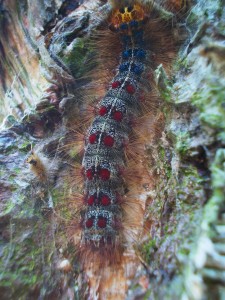
It has arrived in the Gunnersbury Triangle with the hairy dark caterpillar larvae with blue and red warts on their backs all over some Birch trees. The infestation is rapidly defoliating them, and causing substantial damage to some Oaks too.
Lymantria means ‘destroyer’, quite a well-named genus. The caterpillars are aposematic, their hairs and bright coloration warning off predators; the hairs are irritant, containing diterpenes, complex organic ring compounds found in wood and plant resins for defence against microbes and fungi, and retained by the caterpillars for defence against predators.
It will be interesting to see how the trees cope. Oaks can generally recover even when thoroughly defoliated; the Birches may suffer more. People can hardly use pesticides in the nature reserve, even given the means to spray whole trees safely, but biological controls are imaginable. The caterpillars are parasitised by Ichneumon flies, which may well be keeping Gypsy Moths under some sort of control in Europe. There were no controls in place to halt the spread of Gypsy Moth in America, however, where the pest was accidentally introduced in 1869 from Europe by the amateur entomologist Étienne Léopold Trouvelot. He was hoping to cross-breed them with silkworms to improve their disease resistance; he is remembered instead for starting a disastrous continent-wide caterpillar plague which still continues. Attempts with other pest species to introduce their predators or parasites have often proved unsuccessful and sometimes disastrous in their turn.
Apologies to William Blake and the world in a grain of sand and all that.
Today, being a May Bank Holiday Weekend, it is very sunny and bright but the temperature has plummeted. I went shopping with my bicycle — wearing a thick fleece under a windproof jacket, and a ‘silk’ balaclava under my cycle helmet. So much for ‘Cast Ne’er a Clout / Till May be Out’. (I’ve never been sure whether ‘out’ means ‘May has come out’, i.e. it has begun, or ‘May has gone out’, i.e. it has ended. Whichever, it’s remarkably cold.)
After all the nature reserve visits lately, it’s time to look for wildlife closer to home. The blue tits have a lot of hungry little mouths to feed in the nest box above the kitchen door, and the adults flit in and out every minute or two. Sometimes one parent is still feeding when the other returns, whereupon the returner goes and perches in the Apple tree, calling softly, until the feeder flies out. There must be at least 40 feeding trips per hour, and it could easily be more. Remember that next time you’re wondering how much trouble kids are.
The Blackcurrants are in full leaf now, and suddenly today each leaf seems to have an insect crawling over or displaying upon its upper surface. Some are certainly brief visits: smallish Ichneumon flies, about 10mm long and very slender, walk or run hastily about, on the lookout for caterpillars to parasitise with their eggs, a way of life disgustingly cruel enough to put Charles Darwin off religion for ever – leaving all the intellectual arguments aside, he simply found it sickening to imagine a loving creator doing anything so cruel. It’s interesting for such a careful scientist, able to spend 20 years marshalling arguments and evidence, that on a personal level, it was a visceral reaction that settled matters.
Other insects are clearly more like residents. Half-a-dozen leaves have a boldly coloured Harlequin Ladybird (or two: mating) in full view. It has been well said that insects fall into two camps: those that take good care not to be seen, and those that make sure they can be seen. Ladybirds, with their bold warning colours – red+black, yellow+black, red+black+white – are certainly in the conspicuous camp. This means they are signalling their unsuitability as food; the great pioneering zoologist E. B. Poulton coined the term ‘Aposematism’ (Greek ‘apo’ = from, ‘sema’ = sign, i.e. ‘warning off’) for this kind of warning coloration. In the case of the ladybird, they have bitter, foul-tasting or toxic chemicals in their bodies sufficient to make any predator gag, spit them out, and remember not to eat them again. This doesn’t necessarily save the life of the one they learn on, but it’s good for all the others. Each foul-tasting animal gets a better chance of not being tried out as a meal if it looks as much like other foul-tasting animals that predators may have had a bad experience with already. The result is Müllerian Mimicry (yeah, another famous Victorian zoologist) in which the vile imitate the vile as closely as possible. This is why bees look like wasps which look like bees: they all do better if they have the same obvious ‘don’t mess with me’ look.
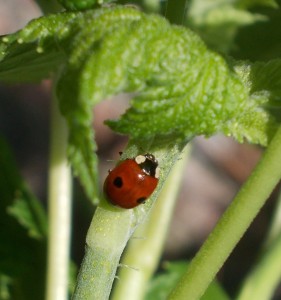
The Harlequin Ladybird is big and bold, advertising itself fearlessly. It is spreading rapidly through Britain, having been unknown here not many years ago. It hasn’t totally displaced our native ladybirds: in fact, my Blackcurrant bush is also home to several 2-spot Ladybirds, much smaller and red all over but for one big black spot on each wingcase. The Harlequins are so called because they have many possible patterns, from much like a 12-spot Ladybird to almost entirely black (the odd red patch remaining), but they always have quite a lot of white on the head, which the natives generally don’t.
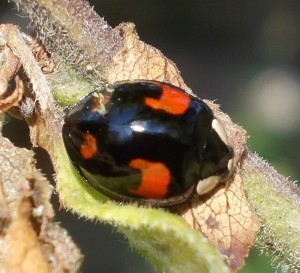
As if that wasn’t enough, several small rather triangular true flies (Diptera) are displaying on the same bush; these are probably males waiting for a mate. They lack the ‘pictured’ wings of the Celery Fly – I’ve got those too, worse luck, though they are pretty little insects, and it’s curious to see them in a mating pile-up, as rival males fight to get the female. What she thinks of it, nature does not relate.
All you have to do to enjoy diverse insect life in your garden is … not to spray. In fact, the insects I’ve seen today are a good reason why spraying is a bad idea. The ladybird larvae are powerful predators of aphids, while the Ichneumon ‘flies’ (parasitic wasps) are valuable biological controls of many damaging species of moth, killing their caterpillar larvae. In short, they are the gardener’s friends.
That’s a lot of the world on a leaf. Or at least, a lot of evolutionary ecology for a May Bank Holiday weekend.